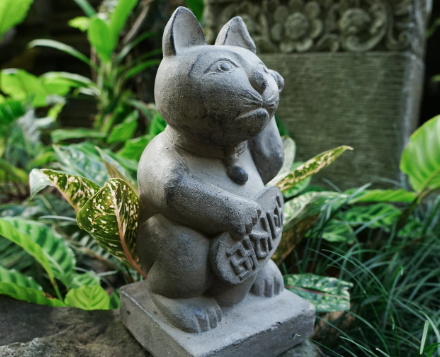Title: The Enigmatic Maneki Neko: More Than Just a Cat Statue
Introduction
The Maneki Neko, or beckoning cat, is a popular symbol of good fortune and prosperity, often seen in shops and homes around the world. Understanding its history and significance can deepen our appreciation for this charming feline figure and perhaps even enhance our own luck. Let’s explore the fascinating world of the Maneki Neko and discover why it captivates so many.
1. Origins and Cultural Significance
The origins of the Maneki Neko can be traced back to Japan during the Edo period (1603-1868). According to various legends, a poor temple priest was visited by a stray cat, which raised its paw in a beckoning gesture. This gesture is said to have invited customers to the temple, ultimately saving it from financial ruin. The Maneki Neko quickly became associated with good fortune, not just in Japan, but throughout Asia and beyond. Many cultures now regard the statue as a symbol of welcoming and prosperity, often placing it near entrances to attract positive energy.
2. The Meaning Behind the Colors
Maneki Neko come in various colors, each representing different fortunes or blessings. For example, the classic white cat symbolizes purity, while a black Maneki Neko is thought to ward off evil spirits. Gold cats are often favored for wealth and prosperity, while green ones are believed to provide safety and protection, especially for travelers. With so many colors to choose from, enthusiasts often select a Maneki Neko that corresponds to their specific wishes or needs, believing that the right color can help manifest their desires.
3. Placement for Maximum Luck
To maximize the beneficial effects of your Maneki Neko, the placement of the statue is essential. It is traditionally recommended to position the beckoning cat at the entrance of your home or business, preferably facing the door. This position allows it to greet and welcome guests, inviting prosperity through the threshold. Additionally, if you own a business, placing the statue on the counter can help draw in customers. Be sure to keep your Maneki Neko clean and free from dust, as a tidy appearance enhances its charm and effectiveness in attracting good fortune.
Conclusion
The Maneki Neko is more than just a whimsical decoration; it carries deep cultural significance and a promise of good fortune. Whether you’re drawn to its enchanting appearance or the hopeful beliefs attached to it, consider incorporating this beloved symbol into your life. For more information on the history and variations of the Maneki Neko, or to explore ways to invite luck into your life, dive deeper into the rich traditions surrounding this charming cat.

